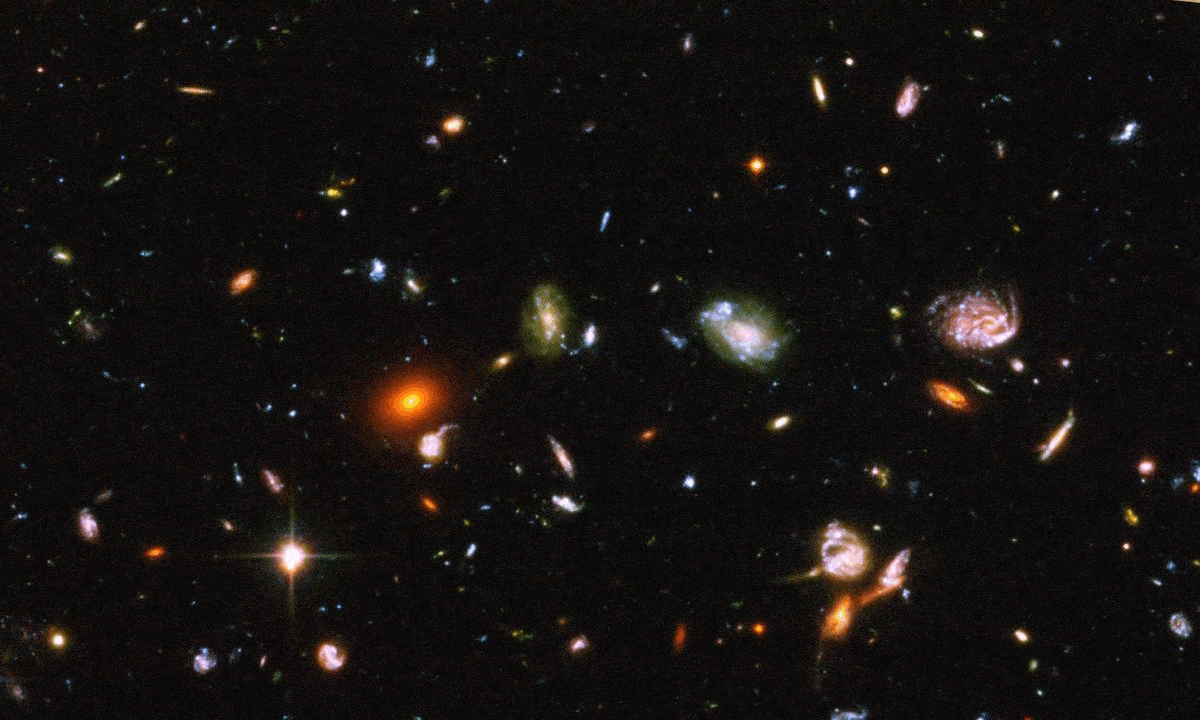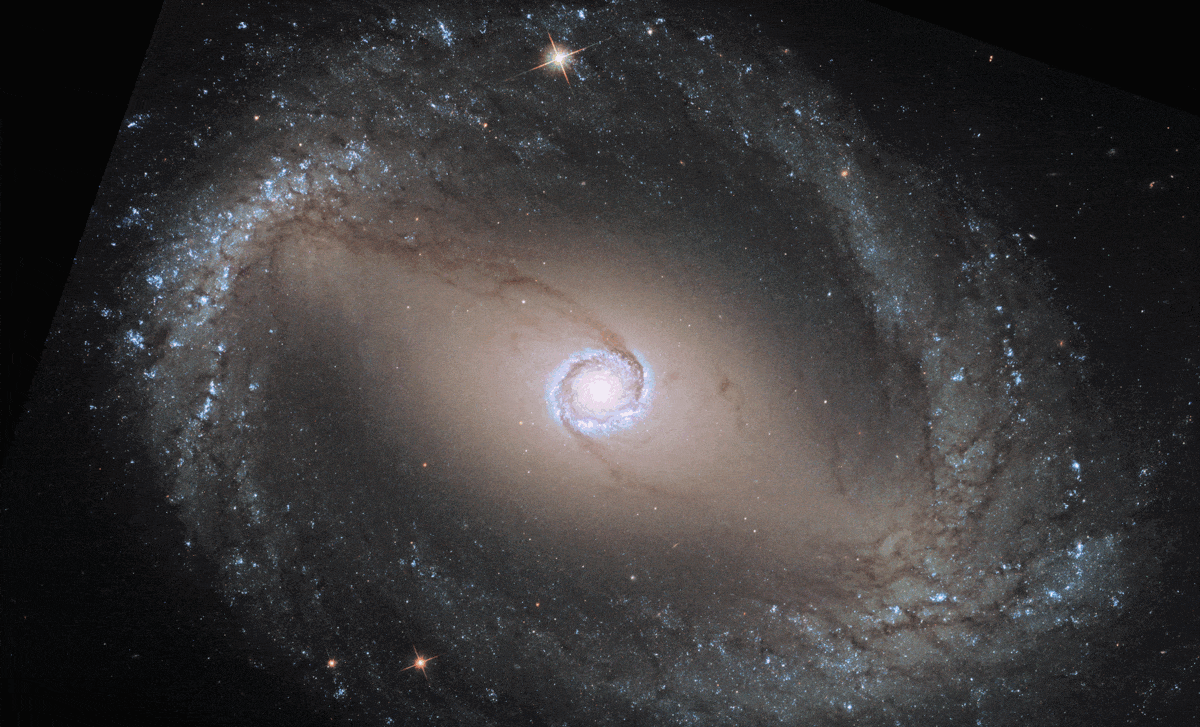Professional Disagreement Over Galaxies Escalates Into Bullying And Harassment
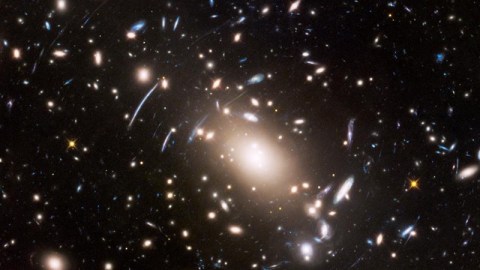
No matter what the science says, there’s no excuse for cruel behavior to a colleague.
Look out into the distant Universe as far as you possibly can, and you’ll come to the earliest galaxies we’ve ever observed. The Hubble Frontier Fields program was designed to make exactly these kind of faint, deep observations, and an incredible amount of science has come of it. One of the most spectacular effects is that of gravitational lensing, where a large foreground mass, like a galaxy cluster, bends and magnifies the starlight from background objects even more distant than the cluster. The Hubble Frontier Fields program imaged many such clusters, enabling us to find some of the galaxies behind them: candidates for the deepest, most distant galaxies ever seen in the entire Universe.

Because these background, ultra-distant galaxies are so faint, however, despite the magnification, they’re often swamped by the light coming from the galaxies in the foreground cluster itself. So one of the keys to measuring, finding, and understanding the ultra-distant galaxies is to understand and subtract out the light coming from the cluster. This, as you might expect, is the subject of some pretty contentious research, with many arguments over the luminosity function (i.e., the amount and type of light) describing the stars in both the foreground and the background galaxies. If you can model and subtract the foreground light perfectly, however, you can see a greater number and percentage of the background galaxies to ever-greater precision.
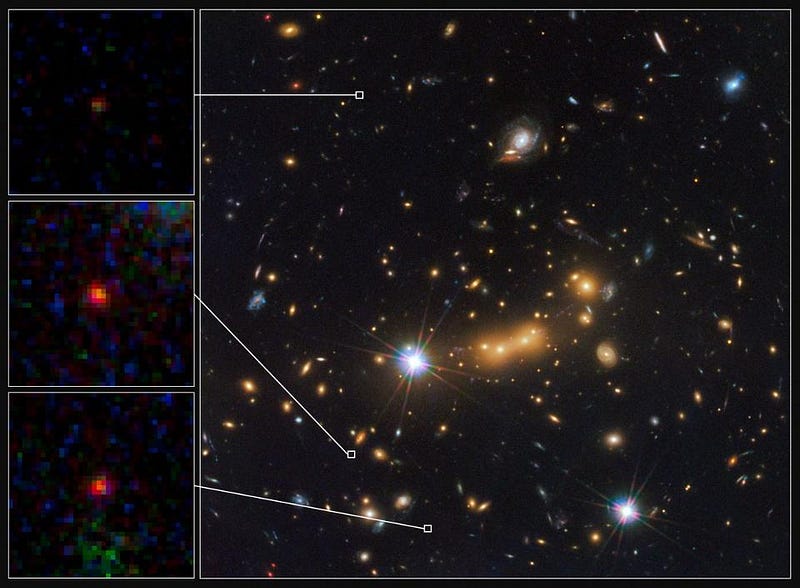
But there’s a danger here: subtract the wrong thing, and you’ll start to “see” galaxies that are mere figments of your imagination. This is particularly challenging because, given the contamination from the foreground light sources and the intrinsic faintness of these candidate ultra-distant galaxies, it’s impossible to do a follow-up confirmation, such as with spectroscopy. There are a number of important uncertainties that are at play, including:
- which luminosity function to use for both foreground and background galaxies,
- how large, in terms of angular size, the ultra-distant galaxies are,
- how much mass is located (and where is it located) in specific parts of the cluster,
- what the magnification factor affecting the lensed galaxies is,
- and what your detection efficiency is,
among other properties.
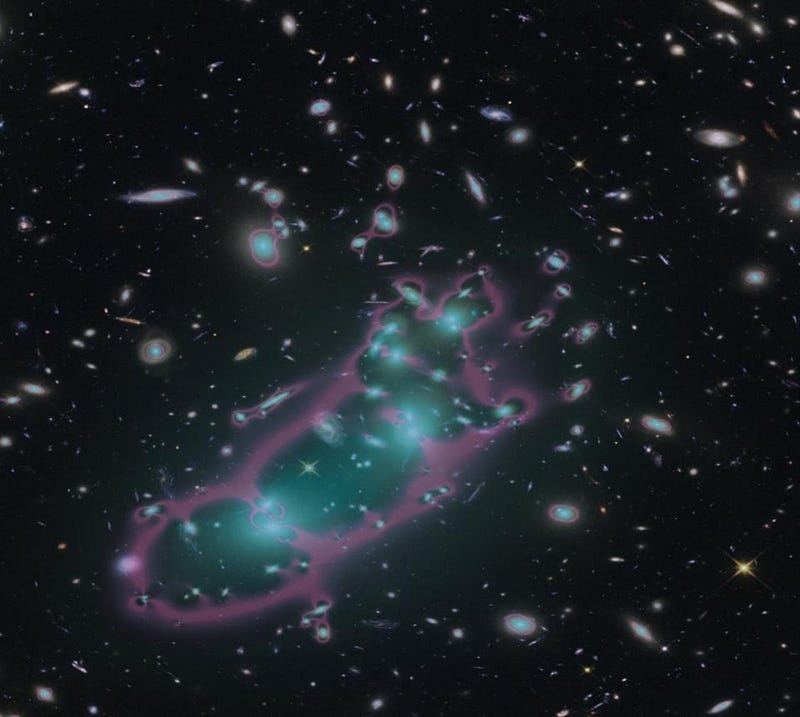
Earlier this year, astronomer Rachael Livermore, in collaboration with Steven Finklestein and Jennifer Lotz, applied a new and improved technique that they co-developed to some of the Hubble Frontier Fields, uncovering some of the faintest and most distant galaxies ever discovered, including galaxies that were up to 100 times fainter than the dimmest galaxies from the deepest survey ever undertaken: the Hubble eXtreme Deep Field.
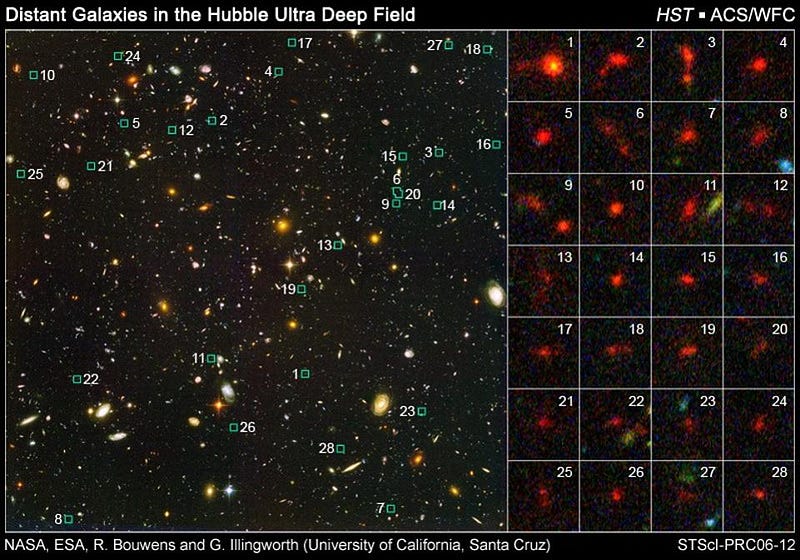
Unsurprisingly, this result and this technique is controversial, and some of the other researchers dispute Livermore et al.’s findings. This is normal in science; discourse about different techniques, assumptions, and methodologies are key to uncovering systematic errors. When those are, at last, sorted out, we’ll have our best-ever understanding of the faintest, most distant galaxies we’ve ever seen.
But until that day comes, there are going to be arguments and disagreements. There are going to be different models, different results, different conclusions, and disparate ways of modeling the galaxy clusters in question, including models that vary from one cluster to the next. Right now, there are five independent teams working on this exact class of problems, including Hakim Atek’s team, Livermore’s, and Rychard Bouwens’. Bouwens has been professionally critical of Livermore’s work in the past; he thinks her galaxy sizes are too large. Of course, Livermore believes that Bouwens’ has made incorrect assumptions himself: about lensing, her field of expertise. Debates and discourse around these professional disagreements are normal, and usually play out in person, at conferences, and in the professional literature.
But in a new paper out this week, Bouwens demolished the line between professional disagreement and personal bullying, and did so in spectacular fashion.

In a paper submitted to the Astrophysical Journal, Bouwens explicitly called out Livermore in a couple of footnotes in his actual paper. Here are a number of points as to what makes these footnotes unprofessional, harassing, and unacceptable. (Peter Coles has an excellent breakdown of this.)
- The use of the phrase “claimed sample!” suggests, at best, that Livermore’s team is incompetent and has “claimed their sample” unreasonably. At worst, it suggests that it is fabricated. “Claimed” appears numerous times in the paper, referring derogatorily to Livermore’s work.
- The fact that Bouwens quotes an unpublishedwork of his own [R.J. Bouwens et al. (2017) in prep] as the refutation of Livermore’s work, which is published in the Astrophysical Journal, is a hugely inappropriate move. It declares that everyone should ignore Livermore’s work because he’s got something that shows it’s wrong, but don’t worry about what it is. Just ignore her.
- And finally, the absurdity of the declaration in footnote #9, “…one might seriously question whether Livermore et al. (2017) actually understood the issues that Figure 7 highlight in claiming to extend LF results to >−15 mag.” Figure 7 is a flowchart of how to calculate what is an isn’t a background galaxy. So this flat out says “she doesn’t understand how to do the work that she’s successfully doing.”
If Bouwens and Livermore were equals, this would be problematic simply as is. But the fact is that Bouwens is an older, established, tenured male professor in a male-dominated sub-field (of the five teams mentioned earlier who work on luminosity functions for ultra-distant galaxies in the Hubble Frontier Fields, only Livermore’s team is led by a woman), while Livermore is younger, only a postdoc (a temporary, junior, research position), and a woman. And worst of all, it’s not even based in fact.

Livermore’s research is quality, has been accepted for publication, and is very much in line with all of the other research and conclusions in her field. In fact, even when compared to Bouwens’ work, all five of the teams have results that are consistent within around 1.5 sigma of each other. (In fact, the aforementioned Atek team’s work has even larger galaxies than Livermore’s.) Yet Bouwens has devoted sections of three papers to tearing into Livermore, and now has stepped up his game to attack her personally in his footnotes, even directly declaring that she does not understand her own work. It’s well beyond unprofessional; it’s bullying, it’s harassing, and it’s just mean.
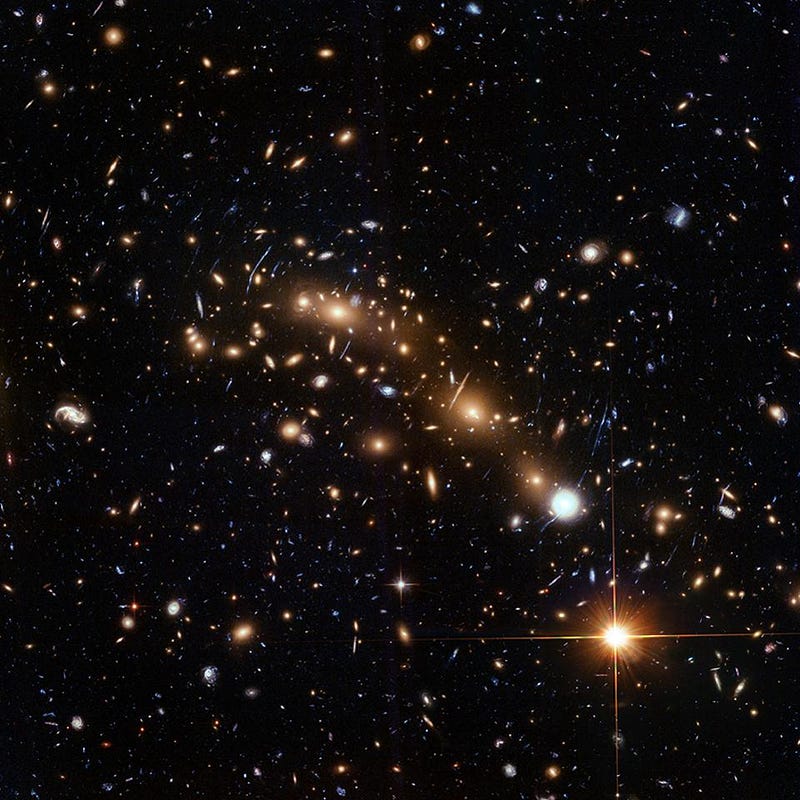
At the present time, the only thing that any of the authors have publicly said about the paper is a halfhearted apology for poor word choice in those two footnotes:
The authors apologize for the unprofessional wording of footnotes 8 and 9. These are being removed and we will post a revised version to astro-ph.
Regardless of whether Bouwens, Livermore, or neither one is correct about the issues of the luminosity function, the lensing effect, and the sample of background galaxies that are (or aren’t) present, this behavior is unacceptable. And it’s up to every one of us to make sure this doesn’t continue. Not for Dr. Livermore, and not for anyone.
But I have a feeling this story is going to have a happy ending. Just a few hours ago, Dr. Livermore tweeted out the following picture:
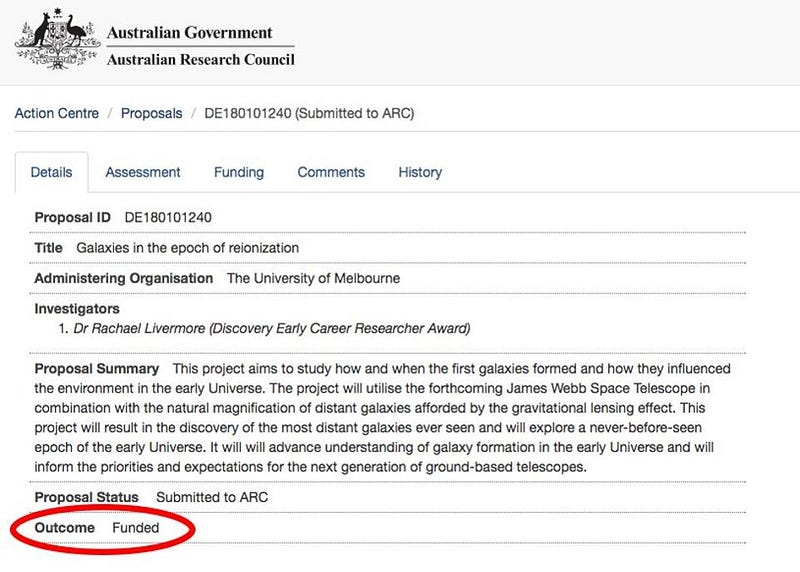
Regardless of what Rychard Bouwens says or thinks, the scientific community values and thinks very highly of Dr. Livermore and her work, and just had her proposal for a very prestigious fellowship funded by the Australian Research Council. One of the major reasons — perhaps the only reason — that there aren’t more women in many scientific fields is the harassing and bullying actions of many men in the field. But it’s up to all of us to speak out against the unacceptable nature of this type of behavior. We will not stand for it. It makes us worse as a community, and it takes away both time and energy from the one thing that brought us all together: the understanding and exploration of the Universe.
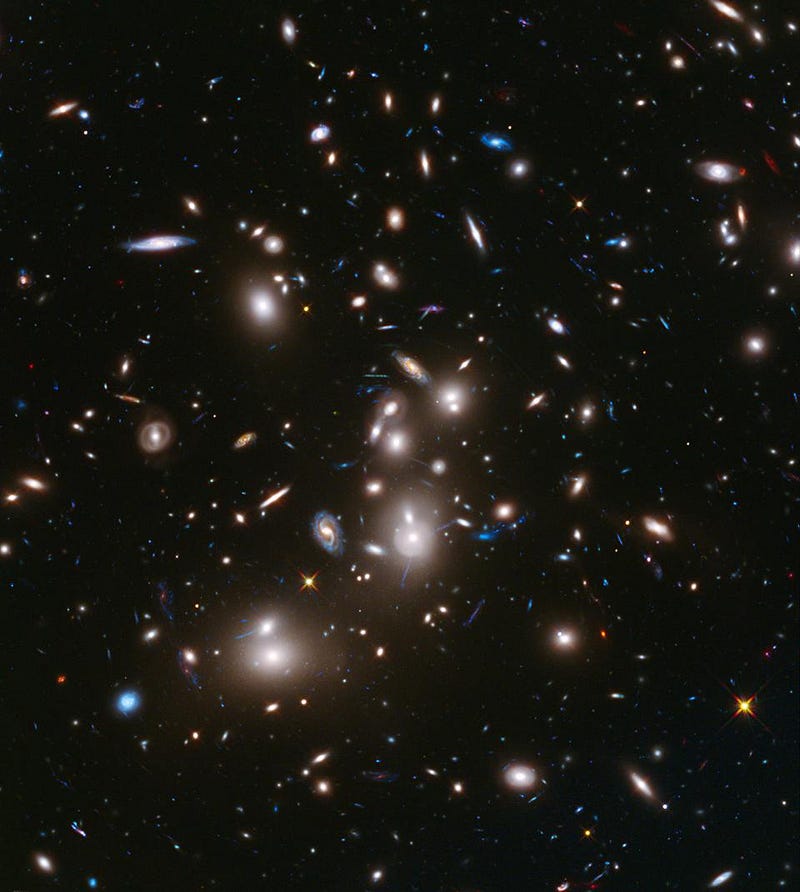
Update: After the paper was submitted and the world reacted, Rychard Bouwens has submitted a new version of his paper and issued, on Facebook, the following statement.
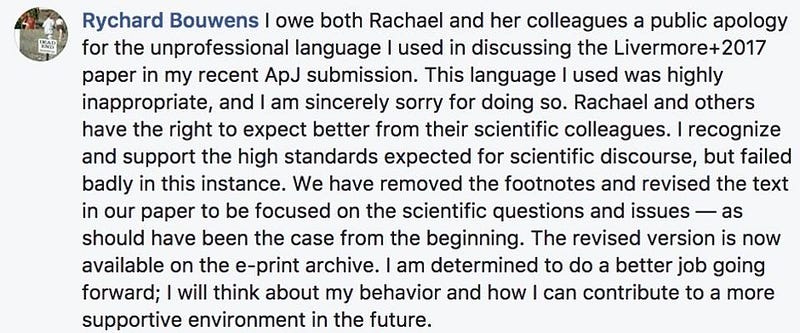
Only time will tell whether he will live up to the claims made in this comment.
Ethan Siegel is the author of Beyond the Galaxy and Treknology. You can pre-order his third book, currently in development: the Encyclopaedia Cosmologica.

